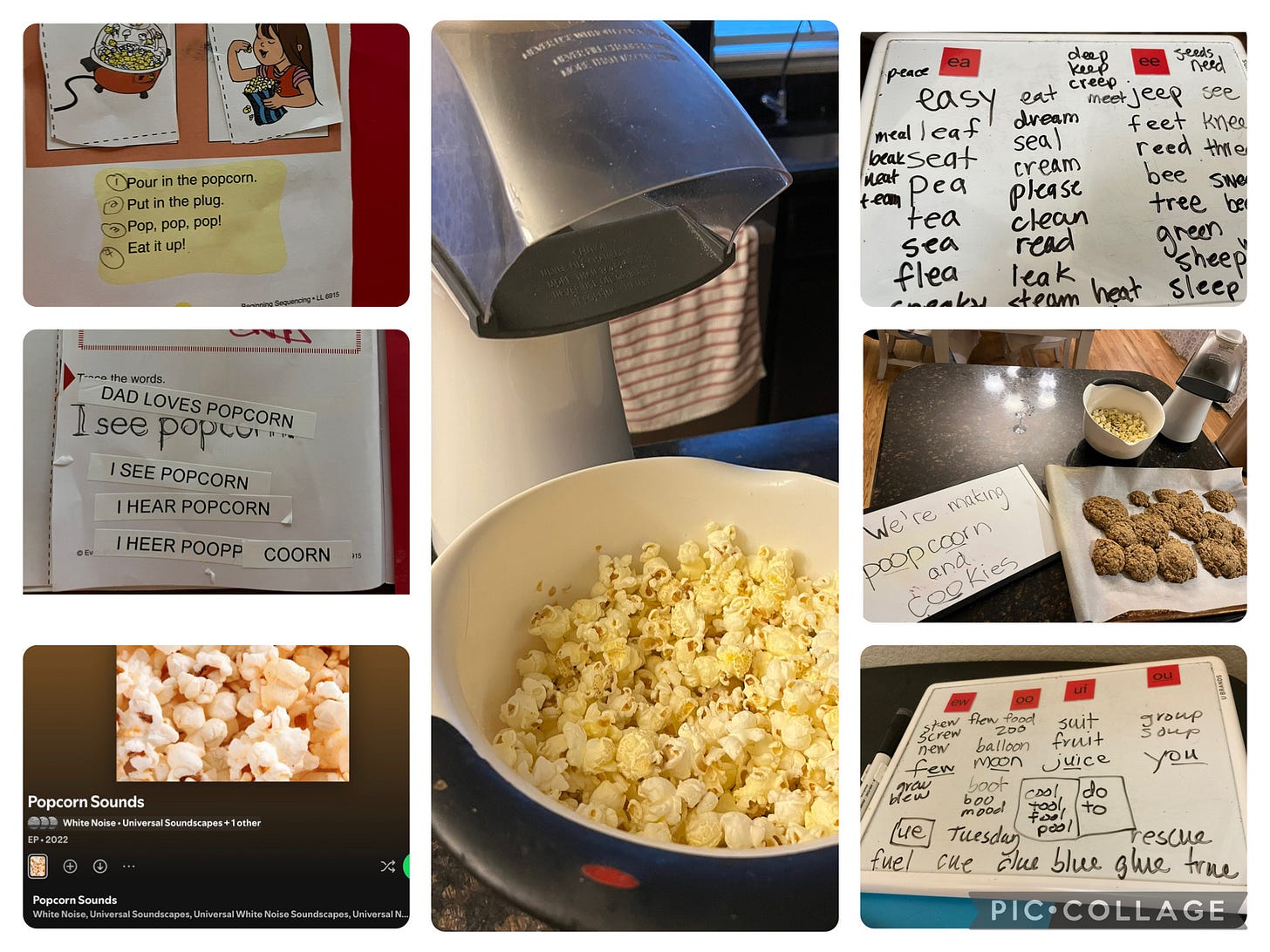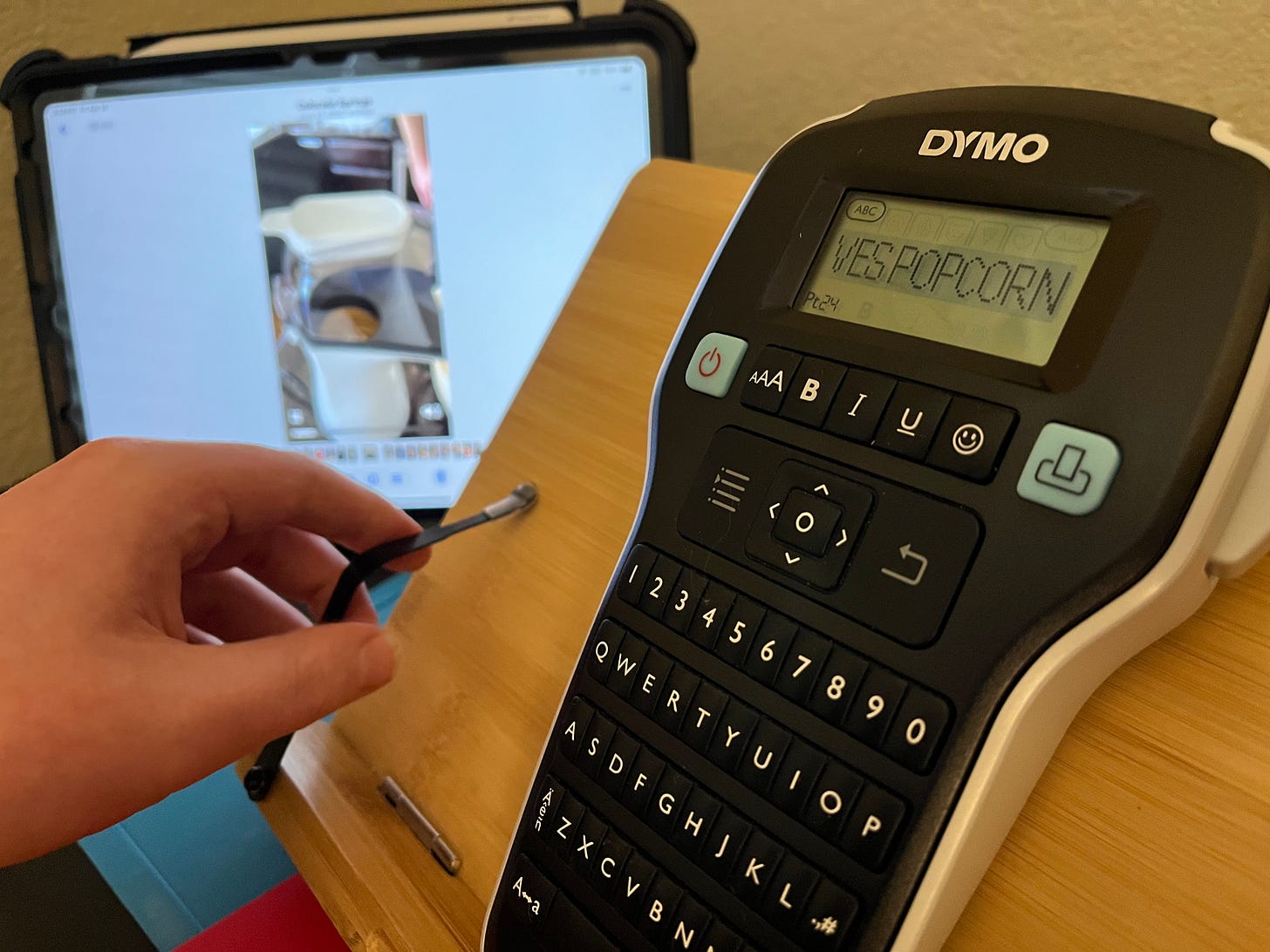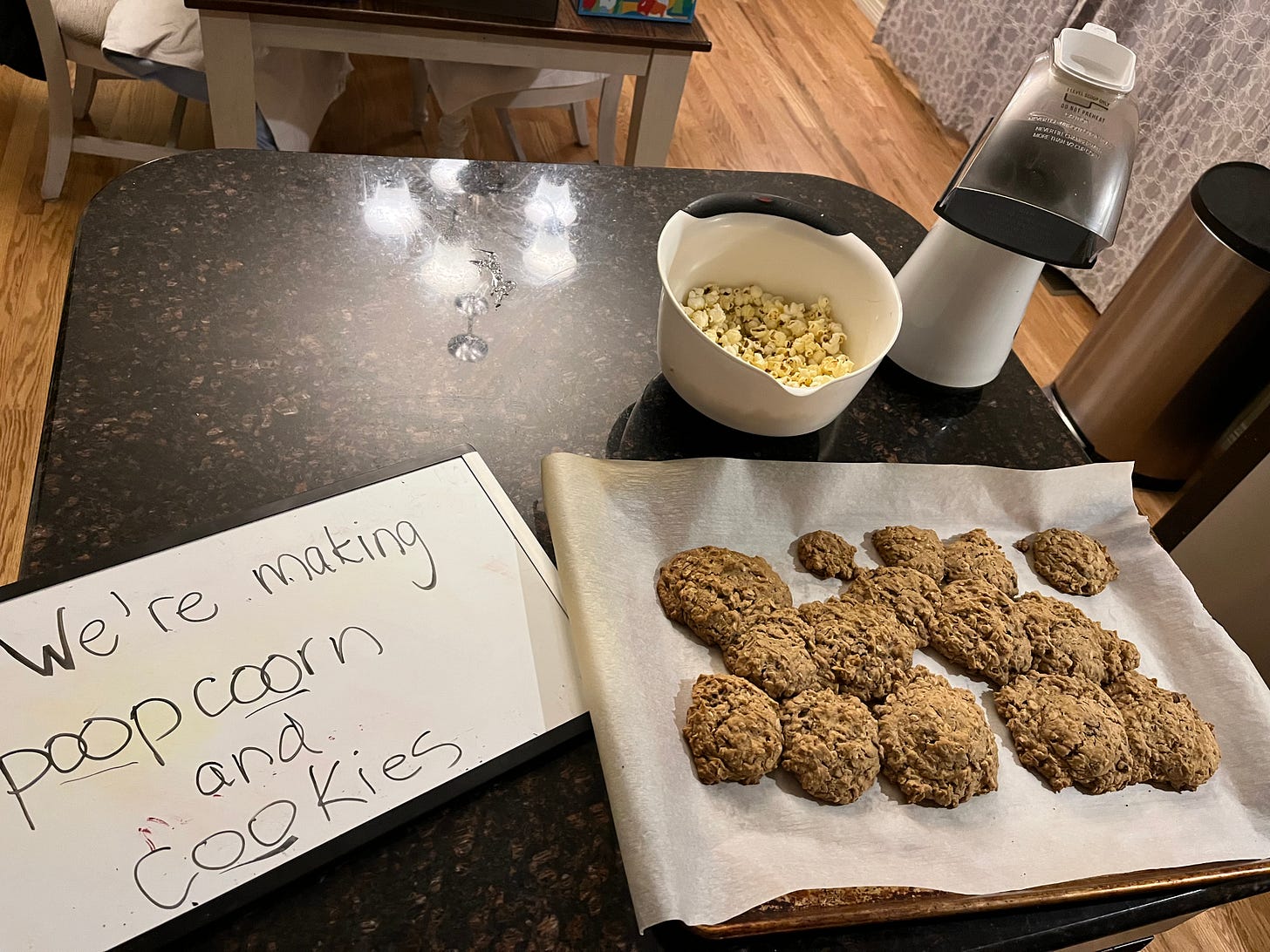As I mentioned in the first part of this series, after many years of supporting N in his self directed pursuits in exploring literacy, the alphabet, and phonics, we began the process of working together to take very short bursts of time to learn phonics in a more explicit and sequential manner in the fall of 2022 after his development had matured in a way that he could better access a teacher led approach.
Throughout the time that we have explored explicit sequential phonics, we have learned about beginning initial sounds in words (a-z), beginning consonant blends (bl, gr, sl etc.), digraphs (sh, ph, wh, etc.), vowels, vowel teams (ai, ay, ee, ea, oo etc.), bossy R vowels (ar, er, ir, ur), and most recently touched on dipthongs (oi, oy, etc).
Early in my journey of supporting N with the motor planning skills needed for using alternative pencils, such as keyboards, I began with having him practice typing by choosing and copying meaningful to him short 2-3-letter words written on index cards (on, go, mom, dad etc.)
When we got to the letter teams in our work with phonics, we began working on motor planning longer words that were relevant to his everyday life.
While N has always loved big fancy words and has many beloved “phrases”, these would have been too exhausting in the beginning for him to motor plan typing.
We initially made sure to explore those longer and higher tier vocabulary words during other activities without the added pressure of writing or typing them.
It was becoming apparent that writing short, then longer single words, was becoming easier for him.
So I decided to tentatively dip into exposing him to practicing the motor planning skills for typing very simple multi word sentences.
When thinking about how to introduce typing sentences, I found an activity book that was geared towards younger children.
Since he has the soul of an artist, I thought he might enjoy looking at the vivid images in the book because they resembled his cherished Youtube music videos and Disney movies.
It also included short stories to go with the pictures that happened to be high interest topics for N such as washing a car, planting a seed, and making popcorn.
It seemed like an easy light introduction to typing short sentences that would not be too cognitively cumbersome.
As N does have ‘both’ motor and cognitive disabilities, his specific needs necessitate reducing cognitive demands as a practical way to support him to put the majority of his energy into learning the physical actions of typing.
The last story from that particular book that we used was the “Popcorn” story.
After reading the title together, I pointed out that we could type the word “popcorn” into the Spotify app to see if there was anything that might be fun to listen to.
We found a ‘popcorn’ white noise playlist.
The sound of popping popcorn kernels created the perfect ambiance to talk about each picture for the story of how popcorn was made via an electric popcorn popper.
Then I reminded N that he had some short home video clips of our very own popcorn popper in his high tech AAC device.
As we watched those home video clips I modeled writing some simple sentences on a favorite alternative pencil, a letter labeler.
”I see popcorn”
“Dad loves popcorn”
”I hear popcorn”
N enjoyed peeling the sticker paper off the label strips and placing them into the activity book.
I read aloud each sentence, then I asked him to choose one sentence from the three modeled sentences that he would like to practice typing.
He pointed to, “I hear popcorn”.
Using partial elements of a teaching strategy “graduated release of responsibility” (a.k.a. “I do, We do, You do”), I showed him how to start typing on a stationary letter labeler that was propped up on a book stand.
Starting with the letter “I”, I modeled touching the letter key then stepping back and allowing him to then reach for it himself.
Next, I modeled moving my finger down to the space bar at the bottom, then again gave him an opportunity to reach and get it himself.
Then back up to getting the letter “H”.
Next I showed him how to motor plan the sequence of the vowel team, EA.
He typed EE instead while gazing at the little screen that gave him visual feedback on what he was writing.
My intention for this activity was not to primarily focus on phonics, but rather to just get some practice motor planning and building motor memory for typing or keyboarding.
However, I was not about to get in the way of his spontaneous creative application of phonics knowledge.
I drew from my education on developmental spelling research which has multiple models of distinct stages, phases, and scales that describe as well as provide guidance in understanding how writing develops from scribbling on through to more complex words.
For beginning or emerging writers, spelling is not a clean cut path, rather, it is a messy process of exploration.
Emphasizing correctness of spelling is not a recommended practice for beginning writers because writing incorrect spellings are a normal part of early spelling and writing development.
For example, a beginning writer might write “I lk dgs” for “I like dogs”.
So I remarked to N, “yes, the vowel team EE does make the same sound as EA. You are so smart to remember that!”
Since phonetic or invented spelling is a normal process in early writing development and is a brand new skill emerging for N, I let it be.
I showed him how to select R, which made the statement, “I HEER”.
We moved on to the space bar, then up to the P for popcorn.
At the letter ‘O’, N methodically and determinedly selected OO, instead of just one letter O.
Thus, making the phrase, “I HEER POO”.
As a seasoned school teacher I sagely predicted the idea of what was coming.
P was the next letter, so I resignedly said, “well, carry on, get that P!”.
He selected a P, and quickly another letter P, before rushing to push print on the letter labeler.
I picked up the printed strip of paper and read his writing aloud, “I HEER POOPP.”
He shook the fidget tool gripped in his hand with an air of satisfaction.
This is the same person in my family who cackles with glee at the sound of the last of the ketchup being squirted out of an almost empty bottle.
I can’t say I was surprised at this particular injection of humor.
I said, “I am glad that you can write the word poop, that was pretty funny!…But since we were practicing writing the word popcorn, can we finish up by typing the word ‘corn’?
He contentedly obliged, by selecting the letter C when I pointed to it, then O, to which he responded by typing ‘OO’ again.
The written result ended up being, “COORN”, which he happily affixed next to the word “POOPP”.
So there we had it, “I HEER POOPPCOORN” in all of its double voweled glory.
Later while reflecting on this activity, I thought about how the ‘frame’ of the sentence, “I HEAR POPCORN”, provided a cognitive support for N be able to access and explore phonetic spelling.
While his ability to write is gradually improving he still is not able to independently write full words or phrases completely from scratch even though, due to hyperlexia, if they are put in front of him he can read them.
I am seeing more and more that having access to “frames” such as a whole word or an entire sentence frees up the cognitive load for N to be able to explore phonics by slotting in new and different sounds in words.
This frame and slot style that is so prevalent in his infrequent spontaneous spoken language is also becoming present in his writing development.
This is all very interesting because while we have not yet formally tapped into it, N is innately using a strategy that aligns with the ‘Comprehensive Literacy for All’ framework’s recommendation of utilizing keywords and word walls while writing with students with significant disabilities.
This approach involves visually displaying known keywords as a cognitive support to access writing new words.
For example, a student can use a word wall with displayed known taught keywords such as “make” to then spell or write a new word such as “bake”.
All the student has to do is swap out the letter M, slot in the letter B, and then copy down the remaining letters of the rime -ake to create the word “bake”.
Being given the adaptation of visual access to a “whole” helps N to more easily see and manipulate the “parts” whether it be language, phonics, or writing.
Using cognitive supports has been a source of great empowerment for N, he is thriving and progressing with them.
While he does live with cognitive disabilities, he still very much has talents, areas of strengths, and a positive self image.
I know this to be true because this past winter, his respite caregiver excitedly reported that they were watching the superhero movie, “The Incredibles”.
During one scene, she commented, “That's so smart.”
Unexpectedly, N turned to look at her and quietly spoke no truer words, “N so smart.”
In closing, later that night after practicing typing the popcorn sentence we made popcorn and cookies.
I could not resist elaborating on his earlier wisecrack as we prepared this delectable snack by writing on a small whiteboard:
“We’re making poopcoorn and cookies”
When I held it out to show him what I wrote, N gave it a side glance, and let’s just say I think he ‘APPROOVED’.






